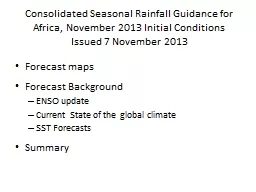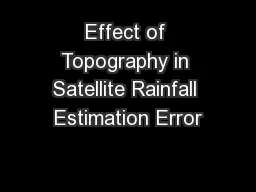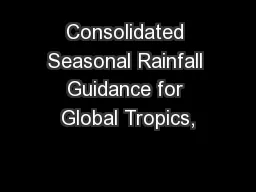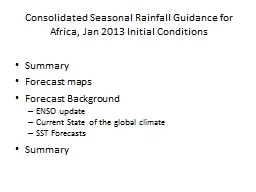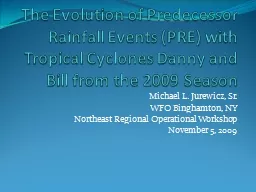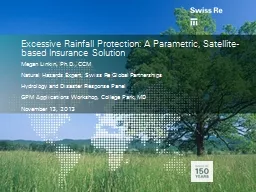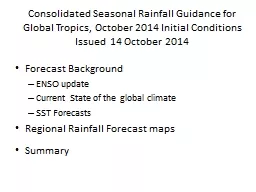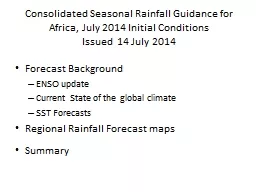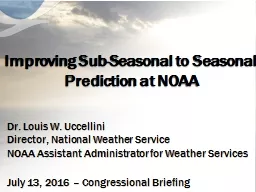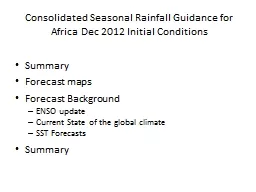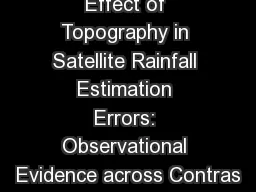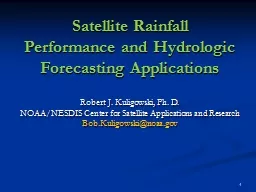PPT-Consolidated Seasonal Rainfall Guidance for Africa, Novembe
Author : tatyana-admore | Published Date : 2016-06-11
Issued 7 November 2013 Forecast maps Forecast Background ENSO update Current State of the global climate SST Forecasts Summary Methodology The forecasts are subjectively
Presentation Embed Code
Download Presentation
Download Presentation The PPT/PDF document "Consolidated Seasonal Rainfall Guidance ..." is the property of its rightful owner. Permission is granted to download and print the materials on this website for personal, non-commercial use only, and to display it on your personal computer provided you do not modify the materials and that you retain all copyright notices contained in the materials. By downloading content from our website, you accept the terms of this agreement.
Consolidated Seasonal Rainfall Guidance for Africa, Novembe: Transcript
Download Rules Of Document
"Consolidated Seasonal Rainfall Guidance for Africa, Novembe"The content belongs to its owner. You may download and print it for personal use, without modification, and keep all copyright notices. By downloading, you agree to these terms.
Related Documents

